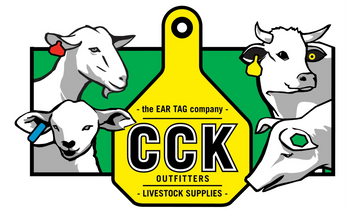Using Insecticide Ear Tags for Long-Lasting Fly & Tick Control
Aug 26, 2025
Pro Tip: Using Insecticide Ear Tags for Long-Lasting Fly & Tick Control
Effective pest control is essential for safeguarding cattle health and productivity. Insecticide ear tags offer a smart, enduring solution. These molded plastic tags gradually release pesticide over time—spreading through the animal’s coat as it grooms, offering months of protection from pests without constant reapplication.
How Insecticide Ear Tags Work
-
Slow Release: Insecticide is embedded in the tag and released consistently.
-
Natural Distribution: Everyday movement and grooming distribute the chemical across the animal’s body.
-
Contact Action: Flies, ticks, and lice are killed or repelled upon contacting treated fur or skin.
-
No Residue in Meat or Milk: The slow-release design prevents significant absorption into products.
Benefits at a Glance
-
Cost‑effective: Long-term control saves on labor and pesticide costs.
-
Reduced handling stress: No need for frequent sprays or dips.
-
Improves animal welfare and productivity: Reduces disease and discomfort, which can harm milk and weight gain.
-
Durable & secure: Most tags include features to prevent loss during the tag’s life.
Y-TEX Insecticide Tag Options & Their Strengths
Y‑TEX offers a range of tag types with different active ingredients, perfect for rotating strategies to prevent resistance:
| Tag Type | Active Ingredient(s) | Control Duration | Ideal For |
|---|---|---|---|
| Tri-Zap | Synergized pyrethroid + macrocyclic lactone | ~2–4 months | Horn/face flies, ticks, lice; safe for calves and lactating cows |
| MAX 40™ / OPtimizer | Organophosphate (Diazinon) | Up to 5 months | Horn flies (even pyrethroid-resistant), various ticks and flies |
| PYthon II / PYthon II Magnum | Synergized pyrethroid (zeta-cypermethrin) | ~3 months | Broad parasite control; safe for lactating cows; no withdrawal time |
| XP 820™ | Macrocyclic lactone (abamectin) | 3–5 months | Resistant horn flies and ticks; improves calf weight gain |
| GardStar® Plus | Permethrin (pyrethroid) | Up to 5 months | Standard control; works well when pests are pyrethroid-susceptible |
Why Chemical Rotation Matters
Rotating between different classes each year helps prevent insect resistance:
Y-TEX’s 4-Year Rotation Strategy:
-
Year 1: Tri‑Zap (pyrethroid + macrocyclic lactone)
-
Year 2: MAX 40 or OPtimizer (organophosphate)
-
Year 3: PYthon II (synergized pyrethroid)
-
Year 4: XP 820 (macrocyclic lactone)
This approach keeps pests off-balance and controls remain effective long-term.
Applying the Tags
-
Use Y‑TEX’s UltraTagger® applicators—they’re built to be easy and tough
-
Position tags between ear cartilages for proper placement. Antiseptic application helps prevent infection.
-
For maximum control, follow label directions: some situations call for two tags per animal, especially when targeting ticks or resistant fly populations.
Final Takeaways
-
Insecticide ear tags are a low-maintenance, high-impact tool for herd health.
-
Choose the right tag, and plan for annual rotation.
-
Start with Tri-Zap, then alternate to organophosphate, pyrethroid, and macrocyclic lactone-based tags.
-
Use XP 820 for resistant pest outbreaks.
-
Always refer to product labels for application instructions and safety precautions.
